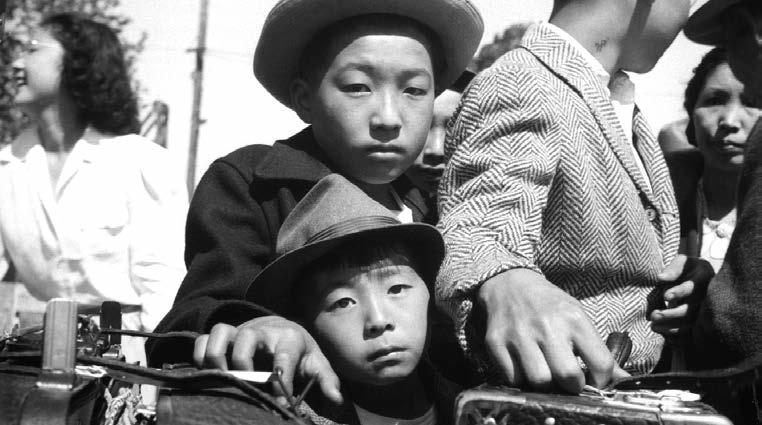
4 minute read
The War That Changed The WorldSM
In the United States, World War II began on a sleepy December Sunday morning in 1941, in a tropical paradise called Pearl Harbor. For much of the world, the war had been raging since as early as 1931 when Imperial Japan invaded Manchuria in an attempt to gain territory. Japan continued its aggression when, in 1937, Japanese troops invaded China. The fighting in Asia began a bloody conflict that would r age until 1945.
In Europe, Germany swelled with a renewed sense of national pride as a new leader took power in 1933. Adolf Hitler helped to propel Germany from a post World War I shell of her former self to a powerful and well-armed nation in matter of a few years. In 1935, Hitler announced that the German Army would expand to a force of 500,000 men, an open violation of the Treaty of Versailles that ended World War I. In 1936, Hitler ordered the German Wehrmacht to occupy the Rhineland, and in 1938, Germany annexed Austria. Political tensions further rose in Europe as Hitler demanded and secured the annexation of the Sudetenland in Czechoslovakia. In September 1938, the Munich Agreement was signed by Germany, England and France, stating that Hitler and Germany would seek no further territorial annexations or occupations. In March of 1939, Hitler violated the Munich Agreement and moved troops into Czechoslovakia. By the late summer of 1939, Europe teetered on the brink of war.

On September 1, 1939, World War II officially began with the German invasion of Poland. As a result of the German agression, Britain and France declared war on Germany. A series of stunning German victories left the free world amazed when in April and June of 1940, Germany conquered Denmark and Norway. The major German assault on Western Europe began on May 10, 1940, when the forces of the Third Reich invaded Luxembourg. On May 15, the Dutch Army surrendered, on May 28, Belgium surrendered and finally on June 22, 1940, France surrendered to Germany. The Third Reich would strike at Britain through the air during The Battle of Britain, but never invaded. Throughout all of the political negotiations of the late 30’s and the European conflict, the United States remained neutral. The United States supported Britain and her Allies through the donation of food, equipment and war supplies, although as yet, no US combat troops had been committed to war.
This terrified baby was almost the only human being alive in Shanghai’s South Station after a brutal Japanese attack on August 28, 1937.

By the fall of 1941, Germany had attacked and captured the Balkans and invaded the Soviet Union. The free world gave the Russians but a few months to survive as a nation. In the Pacific, Japan continued her war against China. As a result of that war and actions against US vessels, including the sinking of the USS Panay, the United States enforced an oil embargo on Japan. Japan relied on the United States for over 80 percent of her oil and saw the embargo as an act of war. After negotiations to lift the embargo failed and talks of peace seemed hollow, Japan felt it had no choice but to go to war with America. On November 26, 1941, Japan’s Imperial Navy weighed anchor and set sail for Pearl Harbor and the beginning of World War II for the United States.
This book is a photographic timeline of World War II from the American perspective. Some of the images that are contained in this publication are iconic and well-known; the majority are seldom seen but also powerful. Collected from the US National Archives and Records Administration, unless otherwise noted, these images represent the World War II experience of the American service man and woman.
December 1941
Japanese begin to
December 1941
At 7:55 am on Sunday, December 7, 1941, Japanese naval air forces attacked the US Pacific Fleet anchored at Pearl Harbor, T.H. and six air fields on the island of Oahu. The Japanese achieved complete surprise and succeeded in sinking or damaging twenty-one ships and service craft, including all eight battleships present, as well as destroyingor damaging 330 aircraft. The human toll was staggering – nearly 3,600 killed or wounded, almost one hundred of whom were civilians.



Even though the Pearl Harbor attack caused horrific damage and loss of life, the Japanese failed to destroy the US Pacific Fleet’s aircraft carriers, which, at the time of the attack, were still at sea after delivering aircraft to Midway and Wake Island. The survival of those carriers allowed the US to remain in the fight. The attack on Pearl Harbor, which the Japanese hoped would bring the United States to the negotiating table, instead became the opening round of forty-four months of brutal fighting, the likes of which the world had never seen.


January February 1942
January-February 1942
After being attacked in the Pacific at Pearl Harbor the previous month, the US was attacked from the Atlantic in January of 1942. The German Kriegsmarine launched its own attack against the US as U-boats relentlessly hunted any US ship along the Eastern Seaboard, with devastating results. In February, as a result of rampant fears of a Japanese invasion on the West Coast and possible spies, Japanese-American families were rounded up and relocated to camps in desolate parts of the country in an action approved of by the US Government.
January 13, 1942 – First US troops arrive in Britain.
February 20, 1942 – US Navy Lt. Edward “Butch” O’Hare becomes first US Ace.
February 27, 1942 – Battle of the Java Sea

German U-boat offensive on the US East Coast begins on January 26, 1941. A German U-boat, U-442, eases away from her victim in the North Atlantic.
At the Colorado River Relocation Center in Poston, Arizona, the Hirano family, George, Hisa and Yasebi, holds a picture of their son who is serving in the US Army.

Internment of Japanese-Americans begins on February 25, 1942. These young people of Japanese ancestry are awaiting their turn for baggage inspection upon arrival at this assembly center in Turlock, California.


